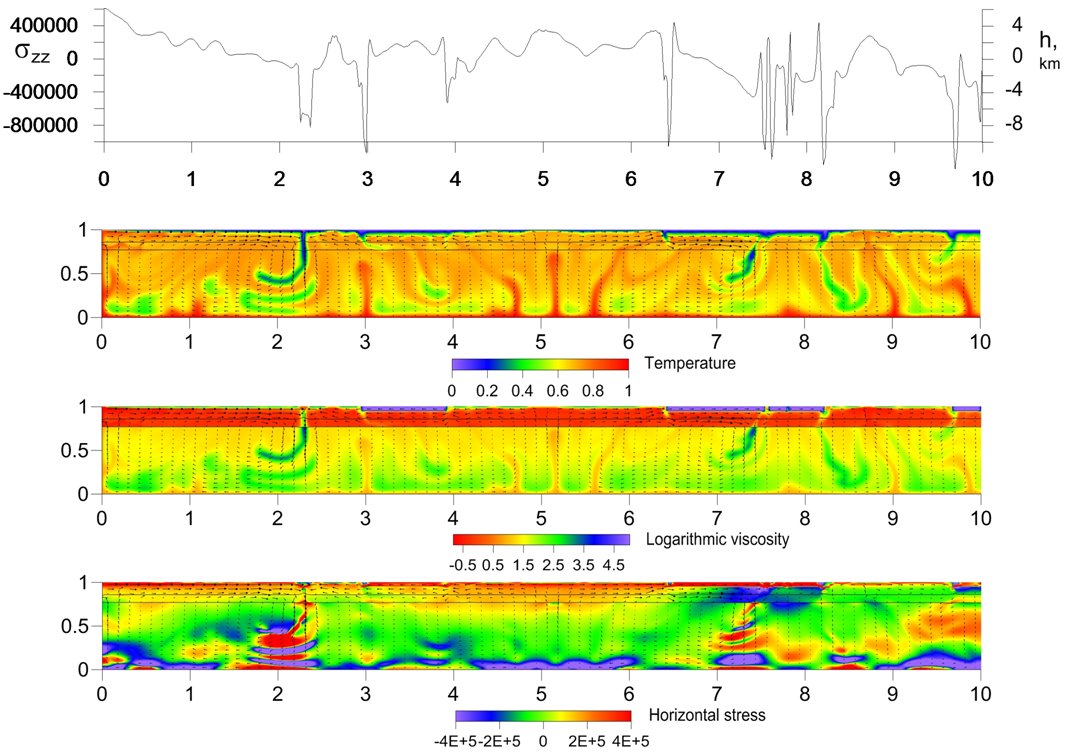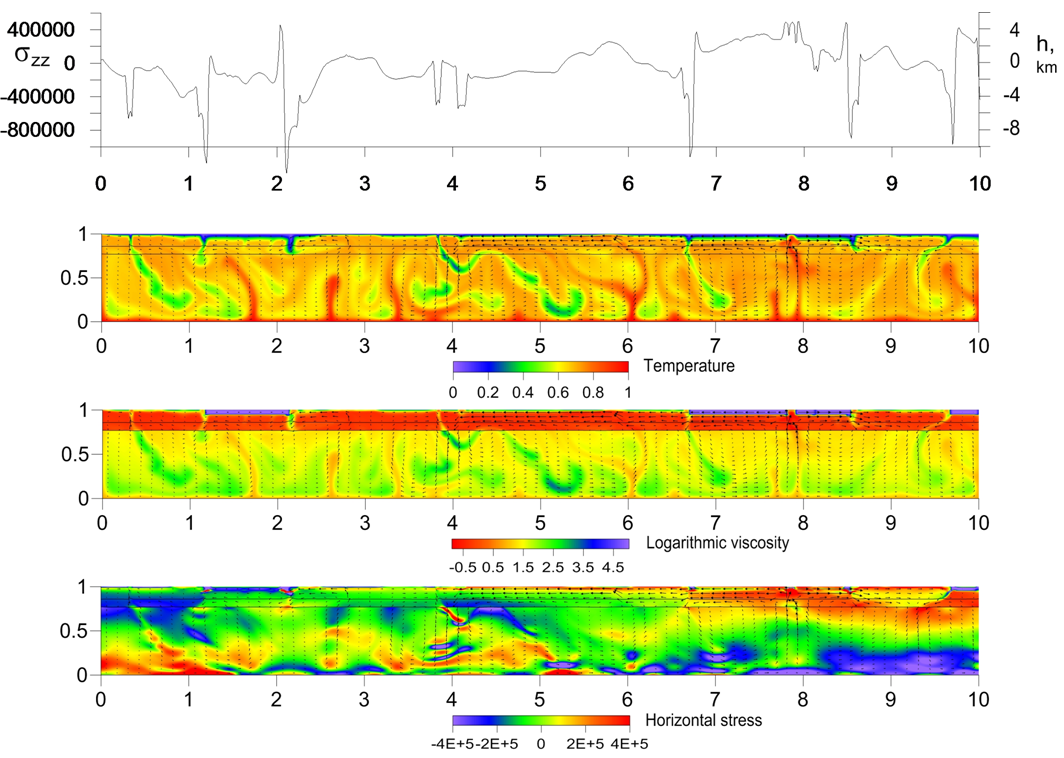In this paper, we investigated model of thermochemical convection with the non-Newtonian rheology in the presence of floating deformable continents. In the course of the simulation, the supercontinent cycle is implemented several times.
The number of continents considered in our model as a function of time oscillates around 3. The lifetime of a supercontinent depends on its dimension. Our results suggest that immediately before a supercontinent breakup, the over-lithostatic horizontal stresses in it (referring to the mean value by the computational area) are tensile and can reach -250 MPa. At the same time, a vast area beneath a supercontinent with an upward flow exhibits clearly the over-lithostatic compressive horizontal stresses of 50-100 МРа. The reason for the difference in stresses in the supercontinent and the underlying mantle is a sharp difference in their viscosity. In large parts of the mantle, the over-lithostatic horizontal stresses are in the range of ±25 MPa, while the horizontal stresses along subduction zones and continental margins are significantly larger. During the process of continent-to-continent collisions, the compressive stresses can approximately reach 130 MPa, while within the subcontinental mantle, the tensile over-lithostatic stresses are about -50 MPa. The dynamic topography reflects the main features of the supercontinent cycle and correlates with real ones. Before the breakup and immediately after the disintegration of the supercontinent, continents experience maximum uplift. During the supercontinent cycle, topographic heights of continents typically vary within the interval of about ±1.5 km, relatively to a mean value. Topographic maxima of orogenic formations to about 2-4 km are detected along continent-to-continent collisions as well as when adjacent subduction zones interact with continental margins.
 |
 |
Source: Baranov, A., Bobrov, A., Tenzer, R. Evolution of stress fields during the supercontinent cycle., 2022. Geodesy and Geodynamics. DOI: 10.1016/j.geog.2022.01.004

